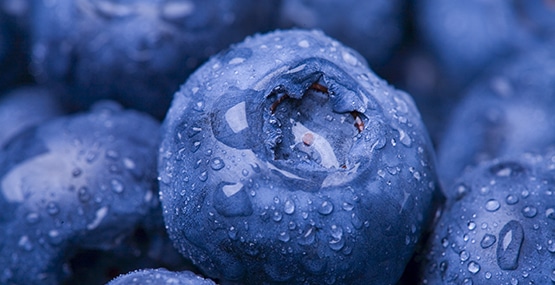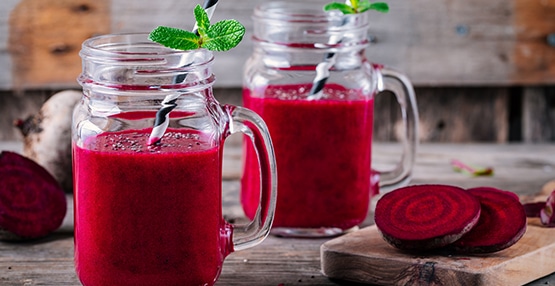
5 Best Plant-Based Tube-Feeding Formulas for Children
Looking for the perfect enteral formula for your kid? Start here.
-At first glance, the popular tube-feeding formulas for children all look kind of the same. They share similar ingredients—and health claims.
But a closer look at the nutrition label and ingredients lists reveals some fundamental differences. And those differences that can make them absolutely right—or perfectly wrong—for your child's nutritional needs.
That's why we've asked Lucille Beseler, MS, RDN, LDN, CDE, FAND, a registered dietitian and president of the Family Nutrition Center of South Florida, and a member of the Nutrition4Kids Medical Advisory Board, to explain her five top choices and what sets each apart.
She points out that unlike animal proteins, many plant proteins are low or lacking in one or more of the nine essential amino acids. Your body cannot produce these amino acids—they must come from your diet.
They're considered essential because they have important roles in the body, from spurring muscle growth to boosting brain function. This is why vegetarians and vegans track the sources and quantities of the protein they eat every day.
The new plant-based tube-feeding formulas are all complete nutrition blends, meaning they have all the essential amino acids along with the fats, carbs, and micronutrients (vitamins and minerals) that children need to grow and thrive.
Kate Farms Pediatric Standard
Best for: Complete nutrition for kids with gastrointestinal conditions
Specifically developed for ages 1 to 13 years, this non-GMO formula can be used for tube feeding, but many children like its chocolate or vanilla flavors and drink it. (The adult version also has a coffee flavor.) Taurine is added to its intact pea protein, so it has all of the essential amino acids of an animal-based protein.
The nutritional nugget that stands out on this label is fiber, says Beseler. It has 3 grams per serving, the most of any formula on this list. That's key because children have a difficult time getting enough fiber, especially when being fed by a tube. It's especially great for kids with gastrointestinal conditions, because it keeps them regular and helps them stay full longer.
The formula has a vitamin and mineral blend and loads of phytonutrients—including extracts and concentrates from broccoli, turmeric, acai, blueberry, and beet. It's also free of major allergens like milk, soy, wheat, and corn.
Beseler notes that Kate Farms also makes a Pediatric Peptide formula, where the proteins are partially broken down into easy-to-digest components. This formula would be helpful for children with gastrointestinal complaints or problems digesting or absorbing the intact protein, she says.

Compleat Pediatric
Best for: Children with feeding intolerance
Designed only for tube feeding, there are several options in the Compleat line of formulas. All provide complete nutrition.
The Compleat Pediatric Peptide formula is a non-GMO product with none of the major food allergens, including dairy, soy, wheat, and nuts. Another option is the Compleat Pediatric Organic Blends, which is available in two varieties, including a plant-based version.
A benefit to the Blends, says Beseler, is that they are thicker consistency, which can be helpful for children with feeding intolerance, such as abdominal pain, vomiting, or gas after tube-feeding.
Nourish
Best for: Children with chronic GI issues or those on a keto diet
Another organic formula with a pureed consistency, Nourish is also non-GMO and free of dairy, soy, gluten, and corn.
With protein sources that include garbanzo beans, green peas, whole grain brown rice and quinoa, Nourish provides complete nutrition. It also has a vitamin blend as well as broccoli, kale, turmeric, and ginger.
For children with chronic GI issues, says Beseler, there is a Nourish peptide formula that includes MCT oil for enhanced digestion.
Another option is the Nourish keto peptide formula, developed with a keto ratio of 84% fat, 4% carbs, and 12% protein. It's one of only a few keto-based tube-feeding formulas available, says Beseler. A doctor or dietitian may recommend a keto diet to help a child better manage particular health conditions, such as epilepsy.
Nutren Junior
Best for: Children who need a nutritional boost
Though it can be used for tube-feeding, Nutren is widely used orally for nutritional supplementation—when a child isn't getting enough calories or nutrients, says Beseler.
It's free of gluten and lactose and contains all the essential amino acids needed for complete nutrition, says Beseler. However, as with milk, the protein source is whey and it does contain soy, so children with allergies to those ingredients should look elsewhere.
PediaSure Harvest
Best for: Complete nutrition for kids who need to gain or maintain weight
Harvest is made with organic fruits and vegetables—including banana, spinach, mango, carrot, and pumpkin—and formulated specifically for tube feeding, although children may also drink it.
Harvest has a juice-like consistency, which is unique among formulas, and is non-GMO and free of gluten and lactose, which are common causes of food intolerances.
The protein source in Harvest is milled whole grain brown rice. One thing to keep in mind, Beseler says, is that it does contain soy protein isolate and soy oil, so it wouldn't be appropriate for children allergic to, or intolerant of, soy.
How to Compare the Options
When trying to decide on a tube feeding formula, Beseler suggests seeking the advice of a registered dietitian, especially one familiar with pediatric nutrition and type of medical issues your child may be facing.
After all, a child with congenital heart disease or pulmonary disease likely has different nutrition needs than one with gastrointestinal disease or neurological impairment.
She advises parents and other caregivers to read labels carefully to look for the following:
- Low sugar content, ideally less than 10 percent of carbohydrate calories
- Fiber, along with probiotics if possible, to promote gut health
- At least 16 grams of protein per serving, since children receiving tube feedings don't usually have other sources of protein
- Easily absorbable fat, such as MCT oil
- Vitamins and minerals that meet at least 30 percent of daily intake needs
All of the formulas above meet these standards, Beseler says, so it's really a matter of addressing food allergies or intolerances, taste (if the child will drink the formula), and what works best for them.
This story has been medically reviewed by Stan Cohen, M.D., a pediatric gastroenterologist at the Children's Center for Digestive Health Care in Atlanta and the director of Nutrition4Kids Medical Advisory Board.



